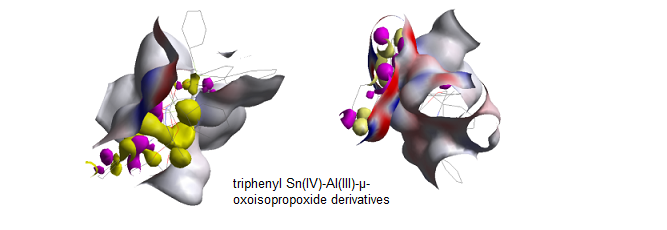
Spectral analysis of μ-bridging coordination in triphenyl Sn(IV)-Al(III)-μ-oxoisopropoxide derivatives of alkylpyruvate aroylhydrazone: Interpretation of pharmacophore geometries
Abstract
Triphenyl Sn(IV)-A(lII)-µ-oxoisopropoxide derivatives having different (NOONO and OONO) backbones were obtained by the reaction of triphenyltin acetate and aluminium isopropoxide with corresponding ligand. Through manipulation of reaction stoichiometry, varieties of coordination compounds featuring µ-bridging coordination were obtained. 119Sn NMR spectra of Ph3SnOAl(OPri)L and Ph3SnOAl(L)2 exhibit a single resonance, in solution, which is a characteristic of four-coordinated triphenyl complex. There are quite close structural and architectural similarities between both series of complexes. Physicochemical analysis confirmed the formation of Ph3SnOAl(OPri)L and Ph3SnOAl(L)2 derivatives. Both the derivatives of triphenyl Sn(IV)-Al(III)-µ-oxoisopropoxide showed tetra- and penta- coordination of metal centres with distorted tetrahedral and distorted trigonal-bipyramidal geometries for Sn(IV) and Al(III) respectively. These central metal ions are capable of organizing surrounding atoms to achieve pharmacophore geometries by the variation of architectural elements of concerned ligands which are not readily and rapidly achieved by other means. Five complexes from each series were screened for their anti-fungal and antibacterial properties.
 ISSN 2321-4635
ISSN 2321-4635